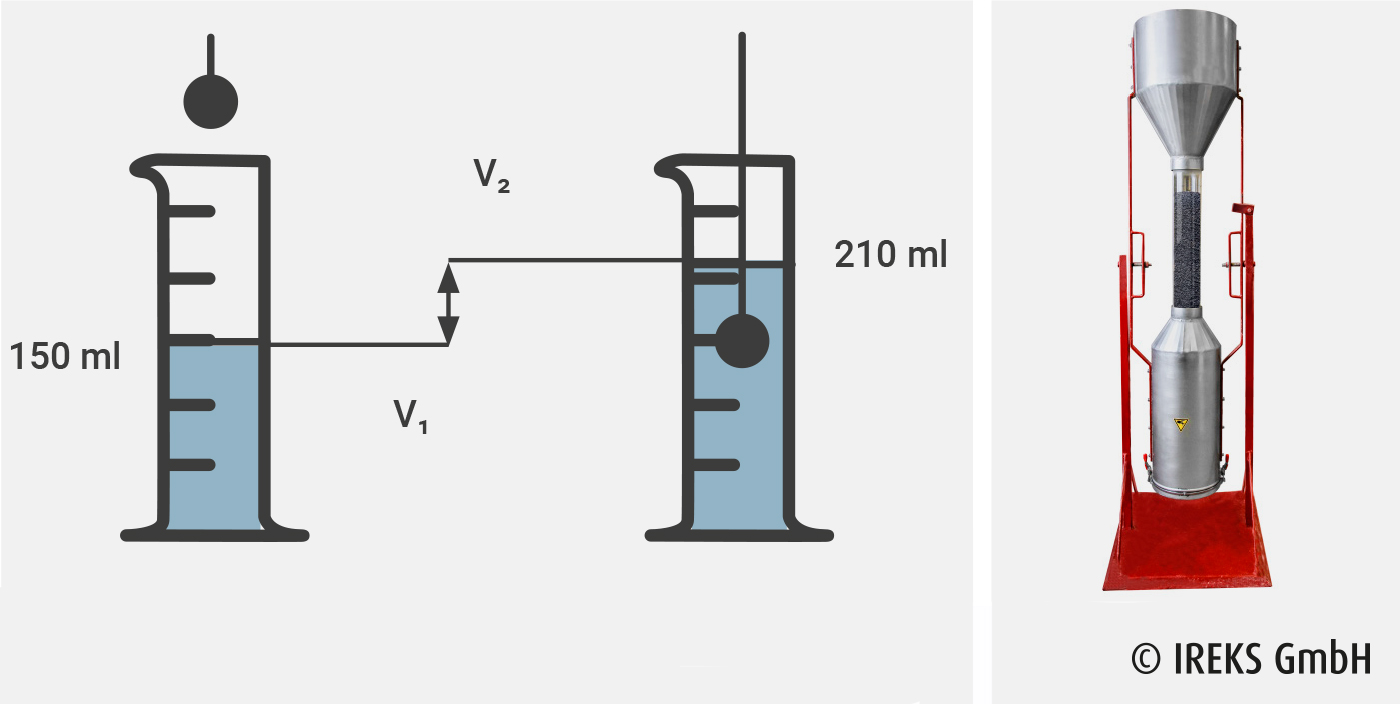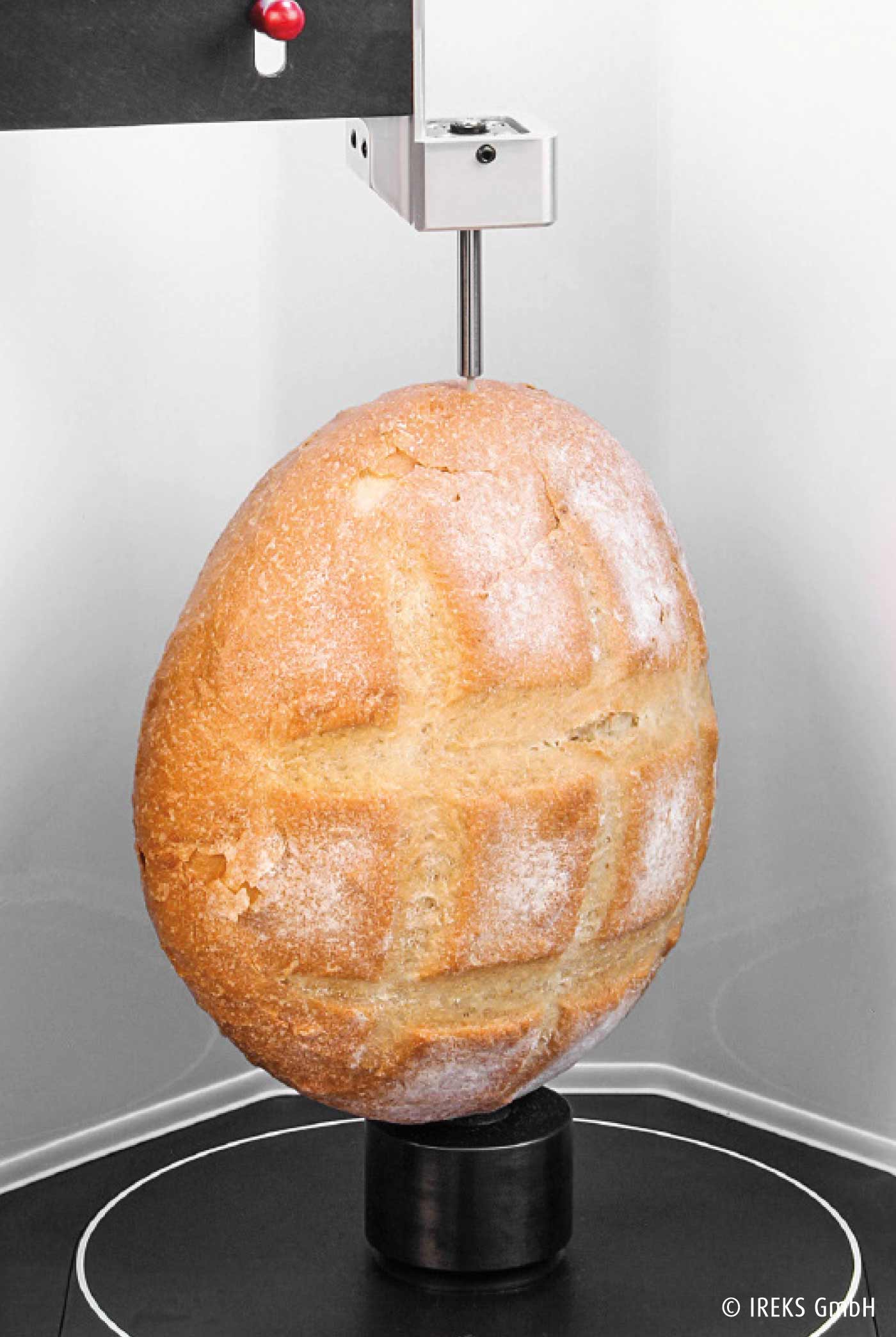The determination of volume of baked goods serves to check the baking capability of flours, to assure quality and to develop products. Here, the specific baked goods volume of the bread, rolls and confectionery baked goods is established.
Various methods are available to ascertain the specific baked goods volume. The determination of volume can be carried out following the principle of Neumann/Doose or by using a volume scanner.
Neumann/Doose
The determination of the baked goods volume takes place according to the displacement principle in the case of Neumann/Doose. The basis for the measurement is a measuring vessel (measuring beaker, pail, etc.) with a defined filling of rapeseed. When measuring, the products are put into the measuring vessel and filled up with the rapeseed. The excess rapeseed corresponds to the volume of the products. To have a sufficiently exact statement, measuring should be carried out three times and, subsequently, a mean value formed.
Volume scanner
Measuring using a volume scanner takes place with the help of a laser distance sensor which scans the upper surface of the baked goods. Within the measuring unit, an additional weighing unit is also contained which determines the weight of the baked goods. During measuring, the baked goods are continuously turned by 360° while the laser crosses the measuring distance, whereby the total length of the loaf is recorded.


